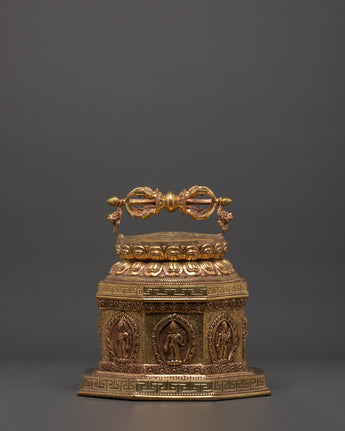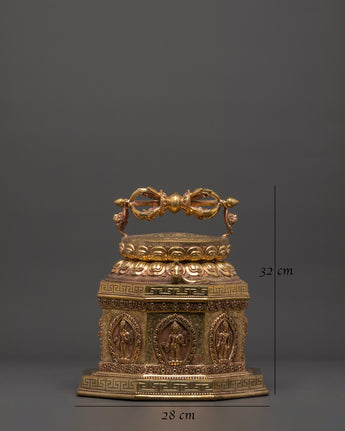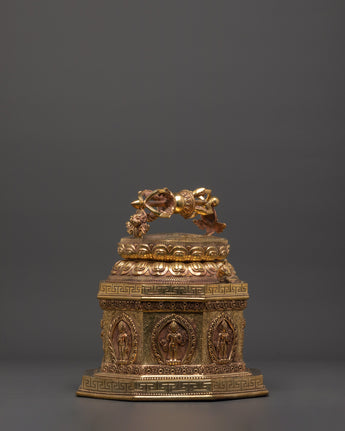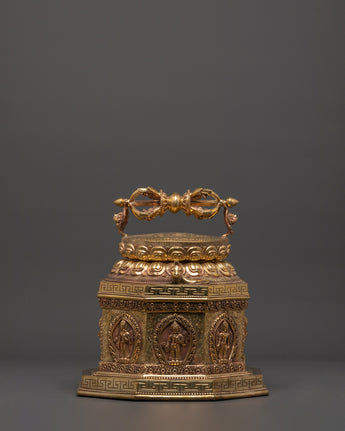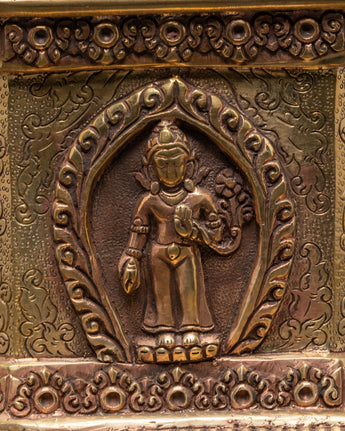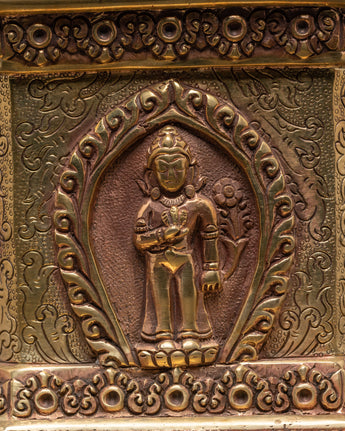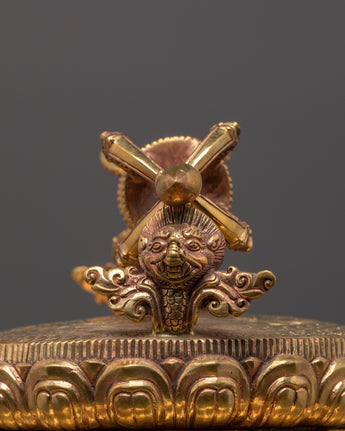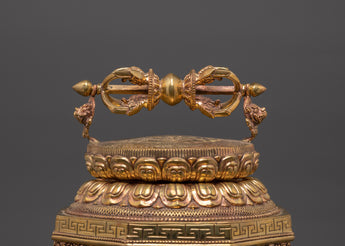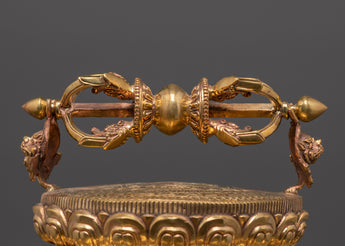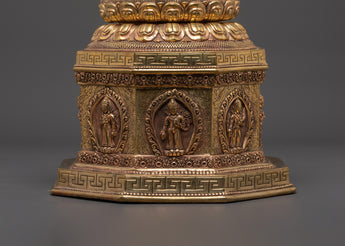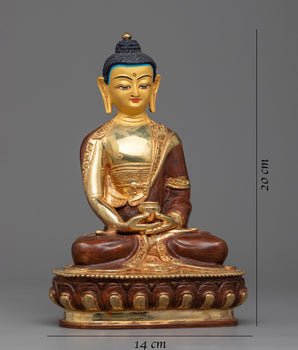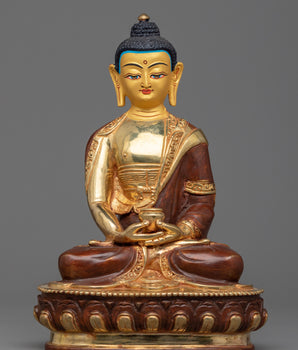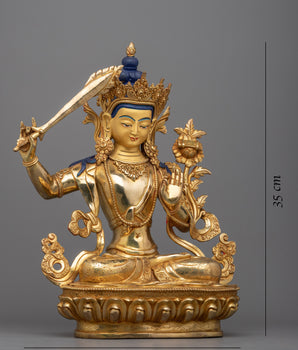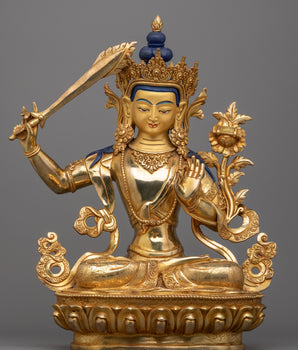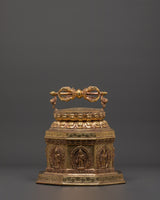
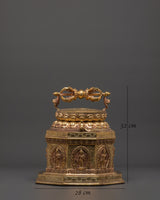
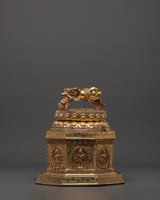
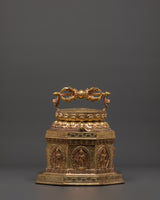
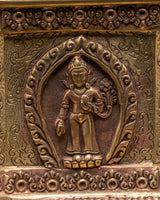
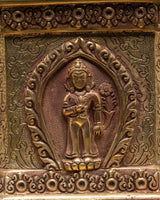
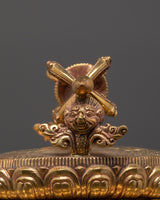
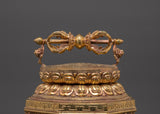
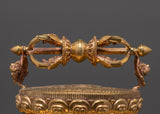
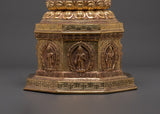
Sacred Buddhist Dharma Dhatu with Vajra | Gold Plated Copper Ritual Artifact

100% AUTHENTIC

HANDMADE

FREE SHIPPING
Handmade Buddhist Dharma Dhatu with Vajra | Vajra Symbol of Enlightenment and Protection
--------------------------------------------
Size: 32cm (Height) x 28cm (Width)
Weight: 9.94kg
Materials: Copper Body, Gold Plated
--------------------------------------------
About The Ritual Item :
This Buddhist Dharma Dhatu with Vajra is a remarkable ritual treasure crafted from copper and richly finished with gold plating. Its presence embodies the essence of Dharma and the unwavering truth of enlightenment. Topped with a finely detailed vajra, the symbol of unbreakable wisdom and compassion, this piece resonates as a source of blessings and protection, making it a significant addition to altars, meditation halls, or sacred collections.
The sides of the Dharma Dhatu are decorated with detailed depictions of Avalokiteshvara (Chenrezig), the Bodhisattva of Compassion, shown holding a lotus blossom as a sign of purity and selfless love. Each figure is framed within lotus-petal arches surrounded by intricate sacred patterns, representing the ever-present guidance of awakened beings. These deities are not only revered as protectors of the Dharma but also as living symbols of compassion, mercy, and the boundless aspiration to relieve the suffering of all sentient beings. The lotus and flame motifs surrounding them further reinforce the themes of spiritual awakening and transformation.
As a Tibetan Dharma Dhatu with Vajra, this ritual stupa brings together sacred artistry and profound spiritual meaning. The gold-plated copper body, crowned by the vajra, and the carved images of Avalokiteshvara transform it into a powerful representation of enlightenment, protection, and compassion. Whether used in ritual practice, meditation, or displayed as an inspiring focal point, this Dharma Dhatu with Vajra reflects the blessings, symbolism, and spiritual depth of Tibetan Buddhist tradition.
Introduction To Stupa :
Before Buddhism, great teachers were buried in mounds. Some were cremated, but sometimes they were buried in a seated, meditative position. The mound of earth covered them up. Thus, the domed shape of the stupa came to represent a person seated in meditation, much as the Buddha was when he achieved Enlightenment and knowledge of the Four Noble Truths. The base of the stupa represents his crossed legs as he sits in a meditative pose. The middle portion is the Buddha’s body, and the top of the mound, where a pole rises from the apex surrounded by a small fence, represents his head. Before images of the human Buddha were created, reliefs often depicted practitioners demonstrating devotion to a stupa.
How to Set Up Your Buddhist Shrine?
Find a clean, quiet, and uncluttered spot.
Please set up an altar table and cover it with an altar cloth that calls to you.
Place your sacred item (statue, thangka, or a picture of Buddha) at the center.


